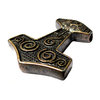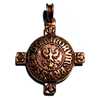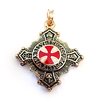CATEGORIES PENDANTS / AMULETS Gold CELTIC STAR 24ct
CATEGORIES PENDANTS / AMULETS Gold CELTIC WEDDING KNOT 24ct
CATEGORIES PENDANTS / AMULETS Gold CLADDAGH 24ct
CATEGORIES PENDANTS / AMULETS Gold CLADDAGH-31 24ct
CATEGORIES PENDANTS / AMULETS Gold Collier SONNENGOTT RE 24ct PK
CATEGORIES PENDANTS / AMULETS Gold CRUCIFIX-24SX51
CATEGORIES PENDANTS / AMULETS Gold DAS HÖCHSTE KREUZ DER KELTEN 24ct
CATEGORIES PENDANTS / AMULETS Gold DAS NORDMANNENKREUZ 24ct
CATEGORIES PENDANTS / AMULETS Gold DRACHE 24ct
CATEGORIES PENDANTS / AMULETS Gold DRACHENAMULETT 24ct
CATEGORIES PENDANTS / AMULETS Gold DRACHENKREUZ 24ct
CATEGORIES PENDANTS / AMULETS Gold DRAGONEYE Lightgreen 24ct
CELTIC STAR 24ct
In stock
can be shipped within 1 days
Customers who bought this product also bought
|
|
|
|
|
|
|
|
Browse this category: Gold
CELTIC WEDDING KNOT 24ct
In stock
can be shipped within 1 days
Customers who bought this product also bought
|
|
|
|
|
|
|
|
Browse this category: Gold
CLADDAGH 24ct
In stock
can be shipped within 1 days
Customers who bought this product also bought
|
|
|
|
|
|
|
|
Browse this category: Gold
CLADDAGH-31 24ct
In stock
can be shipped within 1 days
Customers who bought this product also bought
|
|
|
|
|
|
|
|
Browse this category: Gold
Collier SONNENGOTT RE 24ct PK
In stock
can be shipped within 1 days
Customers who bought this product also bought
|
|
|
|
|
|
|
|
Browse this category: Gold
CRUCIFIX-24SX51
In stock
can be shipped within 1 days
Customers who bought this product also bought
|
|
|
|
|
|
|
|
Browse this category: Gold
DAS HÖCHSTE KREUZ DER KELTEN 24ct
In stock
can be shipped within 1 days
Customers who bought this product also bought
|
|
|
|
|
|
|
|
Browse this category: Gold
DAS NORDMANNENKREUZ 24ct
In stock
can be shipped within 1 days
Customers who bought this product also bought
|
|
|
|
|
|
|
|
Browse this category: Gold
DRACHE 24ct
In stock
can be shipped within 1 days
Customers who bought this product also bought
|
|
|
|
|
|
|
|
Browse this category: Gold
DRACHENAMULETT 24ct
In stock
can be shipped within 1 days
Customers who bought this product also bought
|
|
|
|
|
|
|
|
Browse this category: Gold
DRACHENKREUZ 24ct
In stock
can be shipped within 1 days
Customers who bought this product also bought
|
|
|
|
|
|
|
|
Browse this category: Gold
DRAGONEYE Lightgreen 24ct
In stock
can be shipped within 1 days
Customers who bought this product also bought
|
|
|
|
|
|
|
|
Browse this category: Gold























































































































































